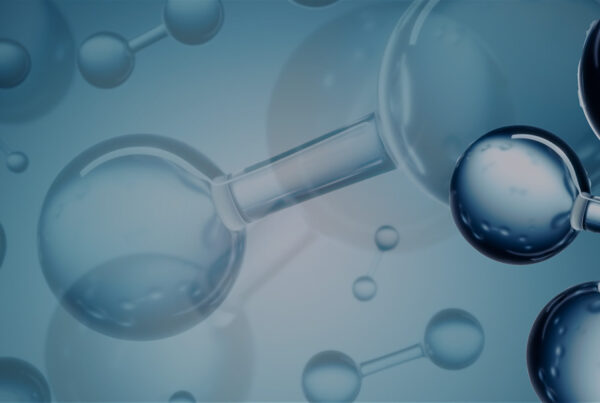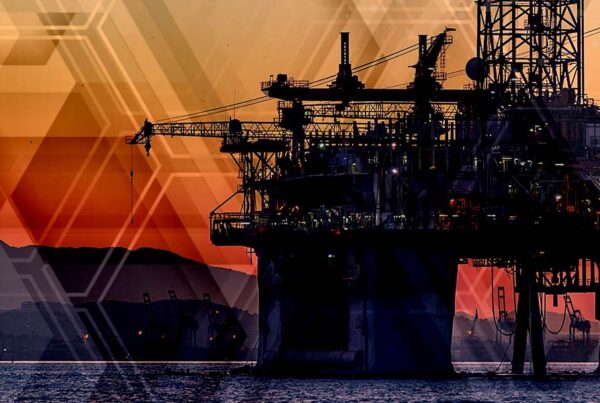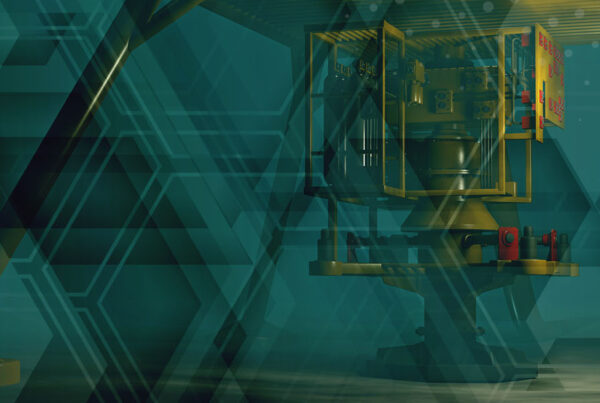DECEMBER 2024
The European hydrogen market has seen its share of volatility in 2024, with slow progress and uncertainty defining much of the year. Some positive signals emerged in the summer with five major projects reaching FID in July, however optimism was dampened in autumn by project cancellations and developer concerns over funding, policy gaps and challenges in securing long-term offtake agreements.
As the year comes to a close, this extended edition of Hydrogen Compass will focus on the market’s slow progress in the final quarter of the year. Major players have scaled back investments, faced development hurdles and cancelled projects, with many developers pointing to policy inadequacy as a key blocker. Despite this, some progress has been made in advancing offtake agreements, funding mechanisms and large-scale infrastructure.
The next edition of Hydrogen Compass will be published in January. In the meantime, if you have any comments or feedback, please do reach out to Jun Sasamura ([email protected]).
The market slows towards the close of 2024
Investment delays
In its 3Q results presentation in November, Uniper announced that it will delay €8bn in green energy investments to the 2030s. This marks a timeline shift from its August 2023 commitment to achieve this investment by 2030, which included a target for renewable gases to make up 5-10% of its gas portfolio. The company attributed the delay to insufficient market and regulatory progress, particularly in the hydrogen sector, exiting several hydrogen supply projects, including the 200MW e-SAF SkyFuelH2 facility in Sweden in October.
ArcelorMittal has faced similar challenges, announcing in October that it will delay FID for key decarbonisation projects. These include renewable hydrogen-ready direct reduced iron (DRI) plants in France, Spain, Germany and Belgium, originally planned for 2025/2026. Despite receiving substantial government support, progress has been hindered by insufficient policy support and the high costs of renewable hydrogen. The company also criticised the EU’s Carbon Border Adjustment Mechanism (CBAM) for lacking trade protection measures against Chinese imports. While it is currently unclear how long the delays will last, the company plans to await hydrogen market developments and CBAM policy updates in 2025 while continuing engineering work and focus on investing in electric arc furnaces to reduce emissions.
German steelmaker Thyssenkrupp has also encountered setbacks, announcing in October that it will extend its reliance on natural gas for its DRI facilities due to high renewable hydrogen costs. Despite government funding and plans to transition to hydrogen blends by 2028 and full hydrogen use by 2037, cost challenges have delayed progress.
Project development hurdles
Marubeni’s 6MW electrolytic hydrogen project, HyBont, has been stalled due to safety concerns raised by the UK’s Health and Safety Executives (HSE). The ‘hazardous substance consent’ permit, which would allow the developer to handle, store and distribute the hydrogen, has not been granted – citing risks to the surrounding population related to the tube-trailer lorries that were planned to transport hydrogen offsite to customers. The project’s production plant, hydrogen refuelling station, and storage containers were planned to be constructed less than 30 metres from the nearest residential property, raising concerns with local residents about its safety.
HyBont was one of 11 projects offered contracts in the UK’s Hydrogen Allocation Round (HAR) 1 in December 2023. A year later, the 10 remaining projects have yet to reach FID, with developers finding the process complex, as well as the more intricate Contract for Difference (CfD) mechanism compared to its offshore wind counterpart.
Another project cancellation
French utility Engie has cancelled its 75MW electrolytic hydrogen-to-synthetic methane project, Colombus, in Belgium. The project, developed in partnership with Belgian lime producer Carmeuse and electrolyser manufacturer John Cockerill, aimed to inject gas into the local grid or use it for industrial and transport applications. However, both Engie and Carmeuse have expressed concerns that the current market conditions do not ensure the project’s viability.
Is policy to blame?
In a pre-recorded speech at the Renewable Hydrogen Summit in Brussels in November, European Commission President Ursula von der Leyen emphasised that Europe is leading the renewable hydrogen sector because of the clear targets that have been set for the region. These include a 10Mt production capacity and 10Mt import target for renewable hydrogen by 2030. However, these targets and the EU’s definition of renewable hydrogen have faced criticism for being unrealistic. In July, the European Court of Auditors (ECA) questioned the methodology used to set these targets and recommended updating the strategy by the end of 2025.
Back in September, German Vice-Chancellor Robert Habeck, along with trade association Hydrogen Europe, had called for a delay in the EU’s renewable hydrogen production rules[1] to reduce costs and allow the market to mature. German utility E.ON recently echoed these concerns, arguing in November that the current rules are contributing to the high cost of production.
However, last month, François Paquet, Managing Director of the Renewable Hydrogen Coalition, argues[2] that blaming these rules alone is too simplistic. He points out that inflationary pressures, challenges with policy implementation, and the need for infrastructure development also play significant roles. The EU’s Renewable Energy Directive mandate that 42% of industrial hydrogen must be renewable by 2030, alongside a 1% renewable hydrogen or derivative target for maritime and aviation fuels by 2031. Although implementation guidance was provided in September, EU nations have yet to enact them into national law, which much be completed by May 2025. Paquet sees this as a crucial step in providing regulatory certainty and advancing market progress. He also suggested the need for increased investment in electricity grid capacity and hydrogen transport infrastructure.
Another major missing component highlighted was offtaker support. In November, methanol developer C2X stated the challenges of securing long-term agreements with shipowners, despite upcoming mandates. Shipowners typically purchase fuel on the spot market and are unaccustomed to or unwilling to commit to long-term agreements. The company stated further that while the mandates offer a clear direction, project developers focused on producing renewable hydrogen and derivative fuels will continue to struggle without a way to bridge the gap between suppliers and offtakers through mechanisms like a CfD. Additionally, e-methane developer TES-H2 also pointed out in November that penalties for non-compliance will be necessary to support movement and meet targets.
Offtake, funding and infrastructure projects show progress
Offtake
Although the ongoing challenge of securing offtake agreements persists, both Gen2 Energy and SSAB successfully secured contracts last month. Gen2 Energy signed an agreement with Tata Steel to ship liquid hydrogen from its Norwegian supply projects to the Port of Rotterdam, where it will be transported via pipeline to Tata’s Ijmuiden facility. The project is set for operation in 2030, with two DRI plants already ordered from Italian firm Danieli. Similarly, SSAB reached an agreement with Amazon Web Services (AWS) for its green steel, produced by the Hybrit consortium, of which SSAB is a member alongside mining firm LKAB and Vattenfall. The steel will be used for the façade of AWS data centres in Sweden, with the first phase of the Hybrit project expected to begin operations in 2027.
In November, DH2 Energy launched an auction for 1,700 tonnes of renewable hydrogen per year from its 35MW Hysencia project in Spain, which received funding through the first European Hydrogen Bank pilot auction in April. The offtake auction will begin with a pre-qualification round until 18 December, followed by a qualification round until the end of January, with final offers set to be negotiated by mid-March 2025. The project, which has already received an environmental permit, is scheduled to begin construction in mid-2025 and is expected to come online in 2027. The developer clearly has strong confidence in the market, announcing in December plans to build four additional electrolytic projects in Spain, with a combined capacity of 1.5GW.
Equinor has taken a similar approach, launching a ‘hydrogen open season’ in December to identify potential offtakers for its 1GW H2M Eemshaven project in the Netherlands. They will prioritise offtakers interested in booking at least 50MW of the project’s capacity. Both this open season and DH2 Energy’s auction mechanism offer a transparent and public approach to securing offtake agreements, potentially expanding the reach of these projects by attracting a broader range of participants.
Funding
The EU launched the second auction of the European Hydrogen Bank (EHB) in December, following the success of the €800mn pilot auction in April. This round offers a total of €2bn in funding. Of this, €1bn is allocated for any end-use sector, while €200mn is specifically designated for maritime hydrogen fuels. The remaining €836mn has been allocated by Spain, Austria and Lithuania for their own domestic projects through the ‘auction-as-a-service’ mechanism that the EHB offers. Germany, however, has cancelled its previously announced €350mn tender due to issues with the auction’s design, which restricts industrial users receiving other subsidies from accessing this funding.
Bidders in the second auction are also subject to a restriction on electrolyser stacks, with no more than 25% of the stacks allowed to be manufactured in China. However, this restriction does not apply to Chinese manufacturers that have facilities in the EU. For instance, Chinese electrolyser manufacturer Hygreen Energy announced plans to invest €2bn in at least two facilities in Andalusia, Spain, as part of its ongoing expansion in the region.
Infrastructure
H2Med partners Enagas, GRTgaz, REN, OGE and Terega have officially launched a Call for Interest for their joint hydrogen pipeline development project, which aims to interconnect Portugal, Spain, France and Germany. The Call for Interest will remain open until 18 December, allowing the project developers to assess the needs of future infrastructure users across the value chain. Following the announcement in November, 16 European companies[3] across the participating countries formed an alliance in December, aimed at establishing a European hydrogen single market. The involvement of these major players highlights growing confidence in Europe’s ability to build a robust renewable hydrogen market, despite the ongoing challenges faced this year.
Key European Project Watch
Key project announcements and developments in November and December
| Project | Update |
| MadoquaPower2X | The MadoquaPower2X consortium (Madoqua Renewables, Power2X and Copenhagen Infrastructure Partners (CIP)), has signed a Memorandum of Understanding (MoU) with the Port of Sines, Port of Rotterdam, and duisport to develop a green fuels corridor. The agreement includes a €500mn investment to enable exports of renewable hydrogen, its derivatives and CO2. The planned corridor will utilise Madoqua’s Green Fuels Terminal (green fuels storage and bunkering) in the Port of Sines, which received EU CEF funding in July 2024. The consortium is currently developing a 1.2GW electrolytic hydrogen project, producing both hydrogen and green ammonia to supply local industry and export to industrial users in the Netherlands. The 500MW Phase 1 of the project was successful in the first round of the European Hydrogen Bank auction receiving €245mn, the largest amount of funding given to any project in the round. FID is expected to be taken in December 2025. |
| Enova Funding | Enova announced it would invest over NOK 777mn (€66mn) in five hydrogen production projects to support the maritime industry’s shift to hydrogen fuel. The funded projects are located along Norway’s coast from Slagentangen to Bodø and aim to establish a robust hydrogen value chain, boosting hydrogen availability for sustainable maritime transport. The five projects represent 120MW of electrolyser capacity, equivalent to 40 tonnes of hydrogen per day. Enova says this is enough hydrogen to reduce CO2 emissions by 200,000 tons per year, representing 5.5% of Norway’s maritime and fishing emissions. The five projects awarded funding are: Fjord Base-Florø: NOK 180mn to a 20MW project developed by HyFuel; Slagentangen Green Ammonia: NOK 144mn to a 10MW project developed by GreenH; Vestbase Kristiansund: NOK 118mn to a 10MW project developed by GreenH; Bodø Hydrogen Hub: NOK 128mn to a 20MW project being developed by GreenH; Kaupanes Hydrogen: NOK 206mn to a 20MW project being developed by Dalane Energi. |
| Methavert | The French government has allocated land at Le Havre for three industrial projects, two of which will produce and import renewable hydrogen or its derivatives. US gas firm Air Products is set to invest €1.1bn ($1.2bn) in building a renewable hydrogen import hub on its parcel of land, while French-headquartered renewables company Qair has pledged €500mN for an e-methanol project, named Methavert, at its site. Both projects will benefit from existing infrastructure, accelerated approval procedures, grid connections, and direct aid for preliminary studies from Haropa Port. Methavert will have the capacity to produce 200,000 tonnes of methanol per year for the decarbonisation of maritime transport and hard-to-abate industries. The plot of land the project is being developed on is one of five Haropa Port parcels designated as ‘France 2030 industrial sites’ in May 2024 and benefits from government support for the implementation of industrial projects. |
| Green Wilhelmshaven | Uniper has selected Electric Hydrogen as the technology provider for the first phase of their Green Wilhelmshaven hydrogen project. Electric Hydrogen will provide a 200MW proton exchange membrane (PEM) electrolyser for Uniper’s project in Northern Germany. The project, which began preliminary front-end engineering design (pre-FEED) in October 2024, aims to transform the site of Uniper’s former coal-fired power plant into a hub for renewable energy production and ammonia imports. Powered by wind-generated electricity, the electrolysis facility will produce zero-carbon hydrogen for industrial sectors like chemicals, steel and transport, while the adjacent ammonia terminal will enhance Germany’s hydrogen supply network. The Green Wilhelmshaven project has been recognised as a "Project of Common Interest" by the EU and is expected to have an installed electrolysis capacity of 1GW by 2030 with the first 200MW by 2028. |
| La Mède biorefinery | Air Liquide is set to devlop and operate a hydrogen production unit at TotalEnergies’ La Mède biorefinery in southeast France. TotalEnergies has set a goal to decarbonise their hydrogen used in European refineries by 2030. The hydrogen is expected to be produced via a steam methane reforming (SMR) unit with CCS and the project is expected to have a capacity of 25,000 tonnes of hydrogen per year. TotalEnergies will use the hydrogen to produce biodiesel and sustainable aviation fuel (SAF) with byproducts from this process to be recycled as feedstock for the SMR unit. TotalEnergies and Air Liquide are investing €150mn into this project, which is expected to be operational in 2028. This project comes after the announcement of an electrolytic project, Masshylia, which is being developed in partnership with ENGIE. Masshylia will also provide hydrogen for the biorefinery with the first 20MW expected to come online in 2029. The total potential reduction in CO2 emissions for the biorefinery from both projects is expected to be 130,000 tonnes. |
| Narvik Green Ammonia | Aker Horizons has signed a conditional term sheet with VNG for the annual supply of up to 150,000 tonnes of ammonia from the Narvik Green Ammonia project in Norway, starting in 2029. This agreement builds on a previous letter of intent but reflects a narrower scope, with reduced quantities and a delayed timeline. The Narvik plant, developed with Statkraft and powered by renewable energy, will have up to 600MW of electrolysis capacity to produce 450,000 tonnes of ammonia annually. The deal marks a significant step in advancing industrial-scale production and distribution of green hydrogen and ammonia in Europe, with VNG set to supply German customers with ammonia directly or by cracking ammonia into hydrogen. |
| GreenRoot | VNG AG and HyCC (a JV between Nobian and Macquarie’s Green Investment Group) have announced plans to develop GreenRoot, a 500MW electrolytic hydrogen project located in Lutherstadt Wittenberg in central Germany. This follows a September 2022 press release, which announced the launch of "large-scale (renewable) hydrogen production to help industries in Central Germany reduce their CO2 emissions" and a MoU signed between the project partners. The project is intended to support the development of the German hydrogen market, with plans to supply hydrogen into the country’s core hydrogen network and to industrial offtakers to reduce their carbon emissions. Local ammonia producer, SKW Piesteritz, is a potential offtaker in the Agro-Chemie Park Piesteritz, neighbouring the planned project site. FID is expected in 2026/2027, with planned operation in 2029. |
[1] Set in the EU’s 2023 Delegated Act – focus on additionality, time matching and geographic correlation to ensure renewable hydrogen production doesn’t rely on renewable energy that would otherwise decarbonise the grid, thus avoiding fossil fuels.
[2] Hydrogen Insight, November 2024.
[3] Thyssenkrupp Nucera, CIP, DH2, Elyse Energy, Enagas, GRTgaz, HDF, Hynamics, Moeve, OGE, QAIR, REN, SEDE, SHS, Terega and Thyssenkrupp Steel Europe.
If you have any project updates that you would like to share with Westwood’s Hydrogen team, please contact Jun using the contact details below.
Jun Sasamura, Manager – Hydrogen
[email protected]
View all issues of Hydrogen Compass here:




